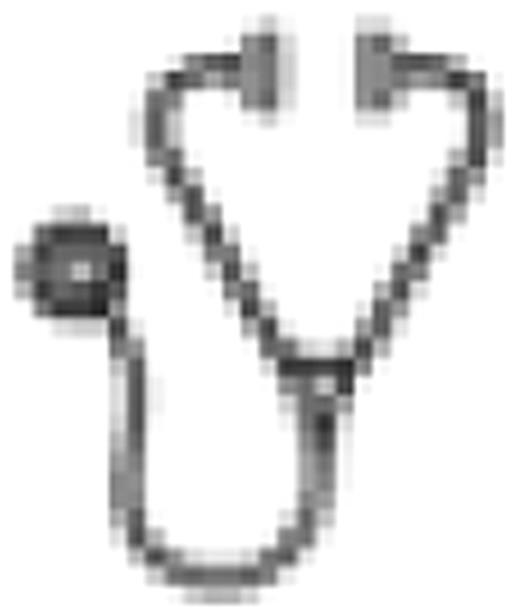Abstract
In the setting of high-dose therapy (HDT) plus ASCT for MM, achievement of a complete (CR) or VGPR is associated with prolonged PFS and overall survival, and thus represents a major goal of treatment; in the IFM99 trials, achievement of ≥VGPR was significantly correlated to outcome (Harousseau et al, JCO 2009, in press). We have previously reported results from the IFM2005-01 randomized phase 3 study of bortezomib (Velcade®)–dexamethasone (VD) vs VAD as induction therapy prior to HDT-ASCT showing that induction with VD yields significantly higher CR and CR+VGPR rates vs VAD, both before and after HDT-ASCT (Harousseau et al, ASCO 2008). Here we report PFS overall in patients receiving VAD or VD induction, and according to post-induction and post-HDT-ASCT response (≥VGPR vs <VGPR). Patients were randomized (1:1:1:1) to receive 4 × 4-week cycles of VAD without (n=121) or with (n=121) 2 × 4-week cycles of DCEP consolidation, or 4 × 3-week cycles of VD without (n=121) or with (n=119) DCEP. Randomization was stratified by baseline β2-microglobulin (β2M, >3 vs ≤3 mg/L) and chromosome 13 abnormalities (del13) by fluorescence in situ hybridization (FISH). Responses were evaluated post-induction and post-HDT-ASCT according to modified EBMT criteria (incorporating near-CR [nCR] and VGPR). Patients achieving <VGPR post-first HDT-ASCT (HDT-ASCT1) could receive a second HDT-ASCT or an allogeneic stem cell transplant (HDT-ASCT2). Following first or second HDT-ASCT, eligible patients could enroll into the IFM2005-02 randomized trial of consolidation and maintenance with lenalidomide vs placebo. There was no difference with regards to the proportion of VAD and VD patients who received maintenance (66.5% vs 67.4%, p=0.082). Treatment groups were generally well balanced for baseline characteristics. However, fewer VAD (12%) vs VD (17%) patients had t(4;14) and/or del17p. Moreover, more VAD (44%) vs VD (33%) patients received HDT-ASCT2 due to achieving <VGPR after HDT-ASCT1. Despite these differences in favor of the VAD group, with a median follow-up of 32.2 months, PFS appeared longer in the VD vs VAD group (36.0 vs 29.7 months; p=0.0643, or p=0.0567 if comparison adjusted for initial stratification factors). As would be expected, PFS was significantly longer in the 218 VAD+VD patients achieving ≥VGPR after HDT-ASCT1 than in the 188 patients achieving <VGPR (median 41.1 vs 33.5 months, p=0.0257). Importantly, PFS was also significantly longer in the 125 VAD+VD patients achieving ≥VGPR after induction than in the 357 patients achieving <VGPR (median 41.1 vs 29.0 months, p<0.001). Therefore the apparent benefit in PFS in the VD vs VAD group might be related to better initial tumor burden reduction, across all prognostic subgroups including patients with poor-risk characteristics (Table). Furthermore, within the VD group, there was no significant difference in PFS between patients with ISS Stage III (β2M >5.5) vs Stage I/II (median 29.8 vs 36.5 months, p=0.1191), and patients with vs without t(4;14) ± del17p (median 33.5 vs 36.5 months, p=0.1655). These data suggest that induction with VD might partially overcome the poor prognosis associated with ISS Stage III MM, and presence of t(4;14) ± del17p. In conclusion, in this trial achievement of at least VGPR after induction appears to be a major prognostic factor. Apparent improvement in PFS obtained with VD vs VAD induction might be related to higher ≥VGPR rate, across all prognostic subgroups including patients with poor-risk characteristics.
Response rates after induction and median PFS in high-risk patients
| . | VAD . | VD . | CR+VGPR (%) . | PFS (mo) . | ||||
|---|---|---|---|---|---|---|---|---|
| N . | CR/nCR (%) . | CR+VGPR (%) . | PFS (mo) . | N . | CR/nCR (%) . | |||
| All | 242 | 6 | 15 | 29.7 | 240 | 15* | 37* | 36.0 |
| ISS II+III | 136 | 3 | 11 | 23.6 | 133 | 14* | 38 | 32.7* |
| ISS III | 54 | 0 | 7 | 23.6 | 52 | 13* | 40* | 29.8 |
| t(4;14) ± del17p | 29 | 3 | 17 | 24.1 | 40 | 18* | 40* | 33.5 |
| . | VAD . | VD . | CR+VGPR (%) . | PFS (mo) . | ||||
|---|---|---|---|---|---|---|---|---|
| N . | CR/nCR (%) . | CR+VGPR (%) . | PFS (mo) . | N . | CR/nCR (%) . | |||
| All | 242 | 6 | 15 | 29.7 | 240 | 15* | 37* | 36.0 |
| ISS II+III | 136 | 3 | 11 | 23.6 | 133 | 14* | 38 | 32.7* |
| ISS III | 54 | 0 | 7 | 23.6 | 52 | 13* | 40* | 29.8 |
| t(4;14) ± del17p | 29 | 3 | 17 | 24.1 | 40 | 18* | 40* | 33.5 |
p<0.05 vs VAD
Harousseau:Janssen Cilag: Honoraria, Membership on an entity's Board of Directors or advisory committees; Celgene: Honoraria, Membership on an entity's Board of Directors or advisory committees. Attal:Janssen Cilag: Membership on an entity's Board of Directors or advisory committees; Celgene: Membership on an entity's Board of Directors or advisory committees. Hulin:Janssen-Cilag: Honoraria; Celgene: Honoraria. Facon:Janssen-Cilag: Membership on an entity's Board of Directors or advisory committees; Johnson and Johnson: Membership on an entity's Board of Directors or advisory committees. Webb:Johnson & Johnson: Employment, Equity Ownership. Moreau:Celgene: Membership on an entity's Board of Directors or advisory committees; Millennium: Membership on an entity's Board of Directors or advisory committees.

This icon denotes an abstract that is clinically relevant.
Author notes
Asterisk with author names denotes non-ASH members.

This feature is available to Subscribers Only
Sign In or Create an Account Close Modal